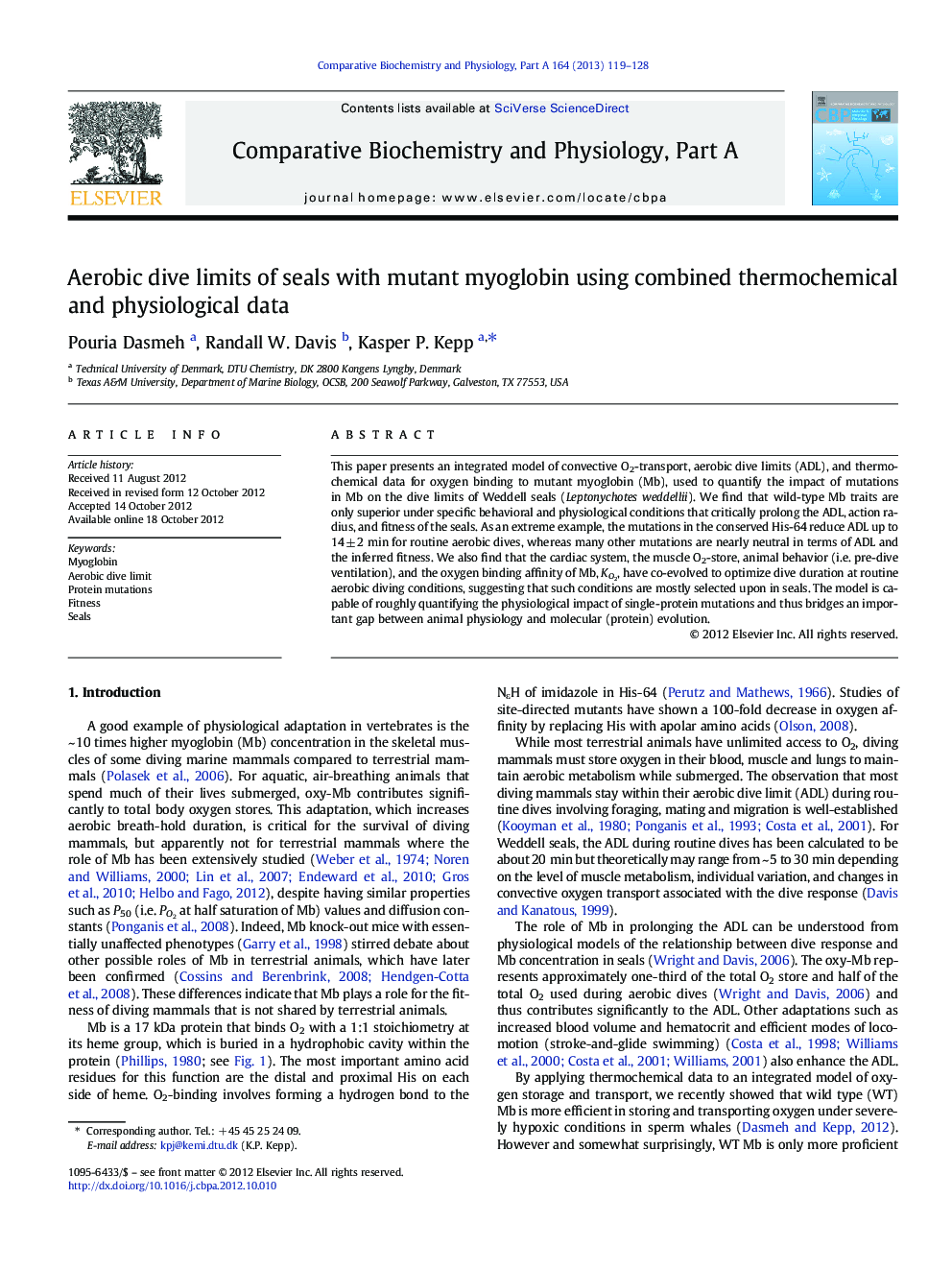| Article ID | Journal | Published Year | Pages | File Type |
|---|---|---|---|---|
| 10818963 | Comparative Biochemistry and Physiology Part A: Molecular & Integrative Physiology | 2013 | 10 Pages |
Abstract
This paper presents an integrated model of convective O2-transport, aerobic dive limits (ADL), and thermochemical data for oxygen binding to mutant myoglobin (Mb), used to quantify the impact of mutations in Mb on the dive limits of Weddell seals (Leptonychotes weddellii). We find that wild-type Mb traits are only superior under specific behavioral and physiological conditions that critically prolong the ADL, action radius, and fitness of the seals. As an extreme example, the mutations in the conserved His-64 reduce ADL up to 14 ± 2 min for routine aerobic dives, whereas many other mutations are nearly neutral in terms of ADL and the inferred fitness. We also find that the cardiac system, the muscle O2-store, animal behavior (i.e. pre-dive ventilation), and the oxygen binding affinity of Mb, KO2, have co-evolved to optimize dive duration at routine aerobic diving conditions, suggesting that such conditions are mostly selected upon in seals. The model is capable of roughly quantifying the physiological impact of single-protein mutations and thus bridges an important gap between animal physiology and molecular (protein) evolution.
Related Topics
Life Sciences
Biochemistry, Genetics and Molecular Biology
Biochemistry
Authors
Pouria Dasmeh, Randall W. Davis, Kasper P. Kepp,
